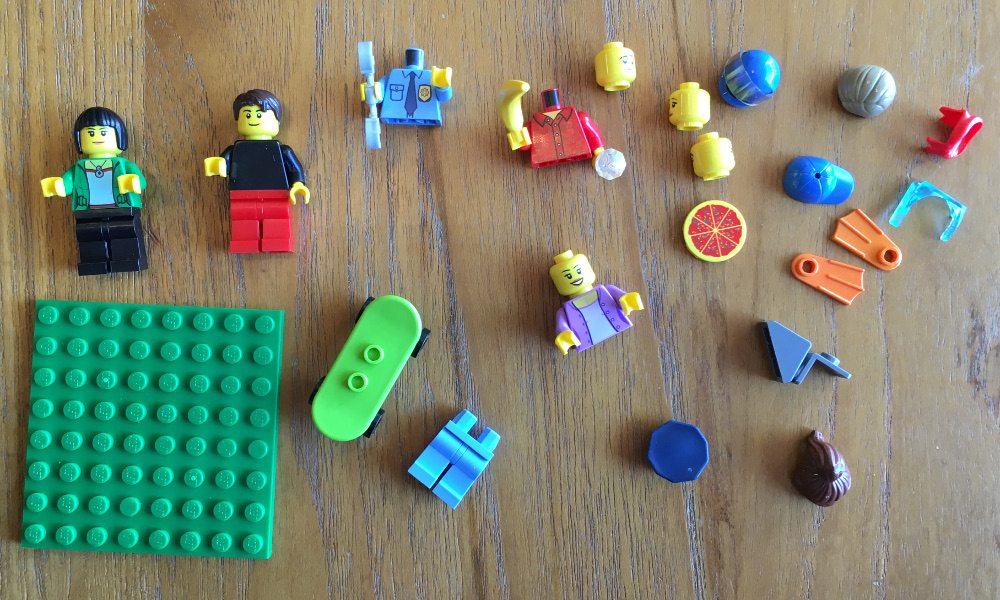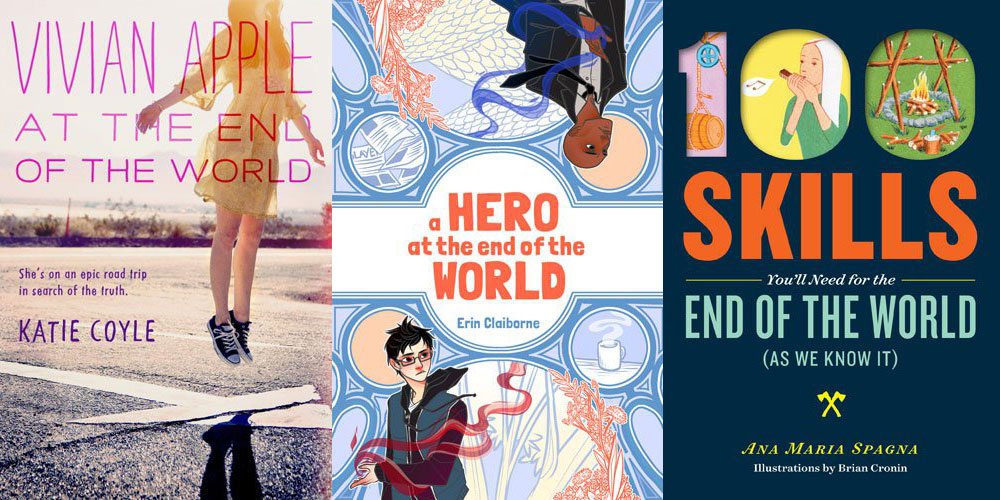
After seeing The LEGO Movie and The LEGO Batman Movie (along with anticipating The LEGO Movie 2 next year or the year after), a lot of kids are itching to make their own LEGO stop-motion movies. Most geek households have a stash of LEGO somewhere, right? Easy peasy! They may even have a huge collections of minifigures, who generally just stand around looking cute (or imposing), but they can be the stars of their own movies.
Stop-motion movies are a fun way for kids (and grown-ups) to express themselves through movie making, without having to actually, you know, be on camera themselves. And LEGO is a perfect pairing. Klutz has come out with a LEGO Make Your Own Movie stop-motion movie book and kit, complete with dozens of LEGO pieces and a complete guide to making stop-motion movies, from creating your first movie to perfecting your technique.
Aimed at kids ages 8 and up, it can fill hours of your kids’ summer days. But if your kids are in the younger end of that age range, I recommend doing this project with them. It’s a challenge to get things right, even as an adult.
The Book
This 100% Official LEGO Guide to Stop-Motion Animation is 64 pages of text, plus a large section in the back with extras and backgrounds. The book also includes 36 LEGO elements: 6 heads, 9 faces, 5 torsos, 3 pairs of legs, a baseplate, hats, masks, hair, handcuffs, a skateboard, a diamond, a pizza, and more. There is even a banana for scale. They don’t include enough for an epic rendition of your favorite novel, but there is plenty to get you started and learn about what stop-motion is all about.

The book starts by going over what you get in the kit (see above) and what you need to provide. You’ll need lights, a work surface, a tripod or stand, a camera or phone, and an animation app or software. The book gives a little bit of advice on that last point, but not much. I was a bit disappointed that they didn’t have a specific LEGO app to offer (there used to be a LEGO Movie Maker app, but I think it’s defunct), but there are plenty of other options.
Next, the book goes into making your first movie. It gives you some ideas of what to have as the subject of your movie, though a lot of the ideas and sample LEGO scenes in the book include LEGO pieces that are not included in the kit. Much of it is meant to inspire, but movie makers will need to come up with most of their own ideas. The book does go into detail about how animation works, though, what animation tools are good for, and how to troubleshoot your animation product, if you should run into problems.
The book includes 10 different mini movie ideas that run you through some of the more common movie topics and procedures, and show you how to make some of the stop-motion magic work, such as how to make a minifigure walk, disco dancing, flying, a chase scene, and even what LEGO bricks do when we aren’t looking. These are good options for getting started, and build skills that can be used in more complex movies later.
The book also covers how to tell a good story through cinema, including movie lingo, ideas for when you get stuck, storyboarding, and even a Mad Libs-esque form to fill out for a movie script.
Lastly, movie makers are challenged to up their game by building on their skills and making their work more sophisticated. You can include opening and closing credits, sound effects, special lighting, set design, and interesting camera work.
The back of the book also includes information on sharing your movie and file formats, a ton of scene backgrounds and extras, a clapboard page, and a storyboard template. There are even two sets of picture cards you can photograph in sequence to create a stop-motion movie without any LEGO. This is the perfect place to start when introducing the concept to younger kids. That way they can learn just a few aspects of the process at once, before adding piece movement.
Using the Book
The writing in the book is obviously aimed at younger kids, but anyone new to stop-motion movie making will benefit from the ideas and lessons contained inside. The book is filled with simple, sound-bite-sized tips, but they are enough to get you started.
I’d made stop motion videos once before, with a completely different kind of kit that used software on my laptop. I hadn’t used my phone to capture this kind of action before. So I was still pretty green when it came to stop-motion.
I set up a spot on my kitchen table to work, and immediately built a stand for my phone, knowing I needed to hold it as still as possible. But with even the slim Speck case on my phone, their example of a LEGO phone stand didn’t quite work. I had to add bricks to one side to tilt the stand, plus add extra bricks on both the front and back to raise the phone high enough to get decent scene framing. My phone still shifted quite a bit, but it was the best I could do. I declared myself ready.
I used the free app Stop Motion Studio, which worked pretty well, but almost all of the film-making extras were in-app purchases, and it didn’t re-focus the camera when I would get closer or farther away. Still, it worked as a proof-of-concept, plus the app allows you to export your work in a variety of formats, or even record video instead of a series of photos. (I later discovered that the Windows Movie Maker application on my computer does some fancy stuff too, so next time I would just use that.)
I tried a couple of the ideas from the book, including having a minifigure walk, and filming from above to make it seem like the character was flying or floating. In the end, the walking was very difficult, and I didn’t have the right tripod to film from above, so I held the phone by hand, with debatable success. But a great tripod, such as a larger GorillaPod, would come in real handy for that. I also just played around with some of the pieces, faces, and bodies, creating mini-scenes awkwardly with my grown-up sized hands.
Walking
LEGO in Space
Bananas and Diamonds!
Ah, Romance
In which I got a little fancier with title and credits in Windows Movie Maker. Note the subtle (and masterfully done) face swap.
My Conclusions and Advice
First of all, I’m obviously not great at stop-motion animation. I’m the first to admit that. But I’m also fairly inexperienced. But the small fingers of children would probably have a much easier time manipulating the LEGO without messing up the whole scene with each shot. A secured LEGO baseplate would also go a long way to smoothing out the action. Also, it helps to have a storyline in your head, even if it’s just a short one. Knowing that the cop is chasing the thief gives you a direction to go, for example. Storyboarding is your friend.
If you want to make more than just rudimentary stop-motion movies with this book, though, you’ll definitely need many more LEGO pieces, to create more scenes, include more characters, and use more props. The included backgrounds and extras are versatile, though, allowing movies to be set in a LEGO town, near icebergs, in space, in the countryside, in a volcano, and under water. But I encourage kids to draw their own backgrounds as well.
My best advice, though, is to use a very secure stand or tripod for your camera or phone when filming, as one little bump affects the quality of the finished piece. My LEGO stand (and my phone within the stand) kept shifting, which made my movies even choppier than normal. If you can, use a larger phone or a tablet to take your photos, as I didn’t notice a few smaller detail mistakes on my iPhone SE, such as my finger in one shot, or bad framing.
My conclusion is that the LEGO Make Your Own Movie book and kit is quite inspiring, but it does take a lot of effort to make a good movie. This is part of the fun, though, and this book will give you and your kids great movie fodder and inspiration for years. And, when you run out of ideas and have mastered the techniques in this book, check out The LEGO Animation Book from No Starch Press, which takes LEGO animation to a much higher sophistication level, best for maybe ages 12 and up. GeekDad Rory reviewed it last year, and is obviously much better at stop-motion than I am.
Note: I received a copy of this book for review purposes.




The free MS Movie Maker is what we used in our play group and it worked well for this. It’s tough in stop-go in to be patient while filming sequences so they are smooth, but you appreciate how much work goes into claymation and Lego movie.
Yes, patience is key with this!